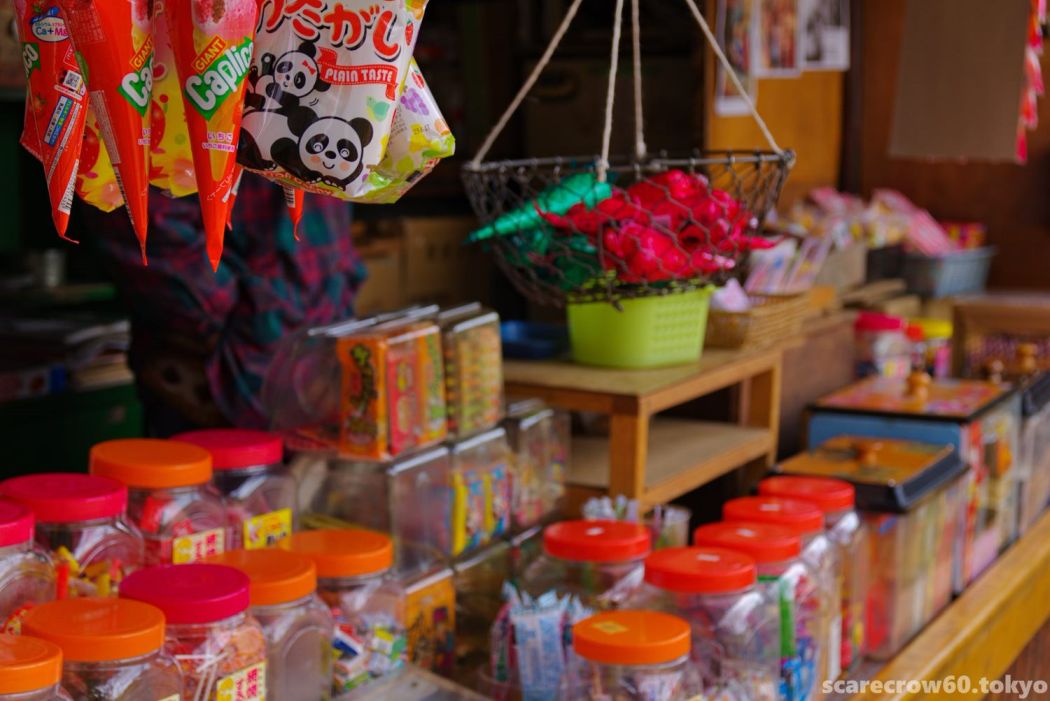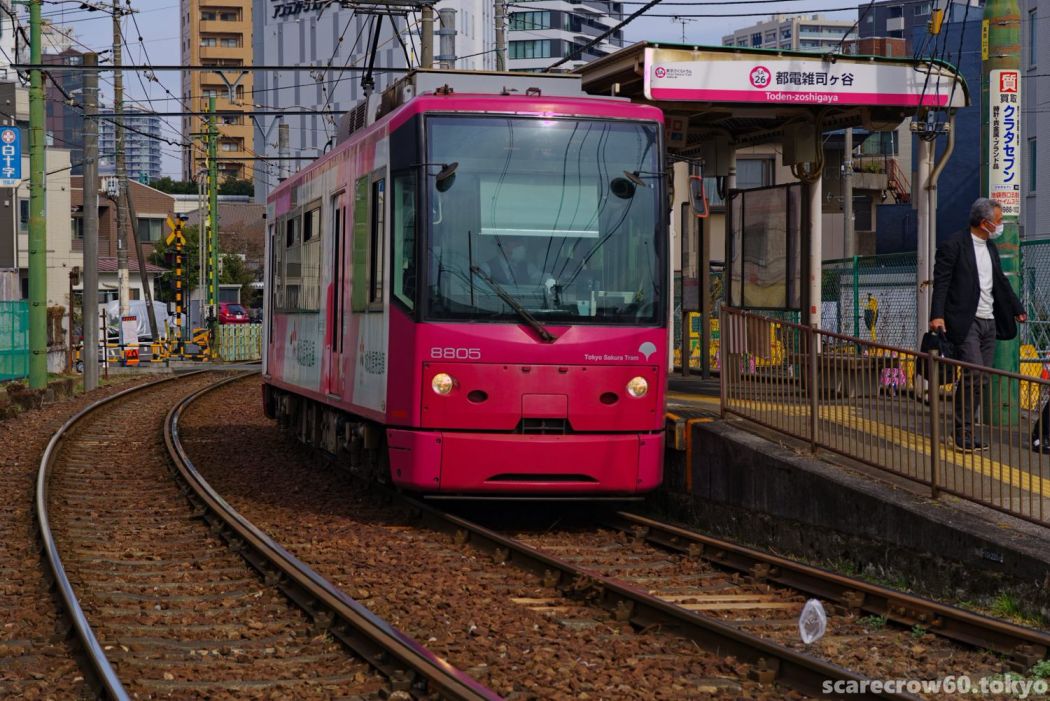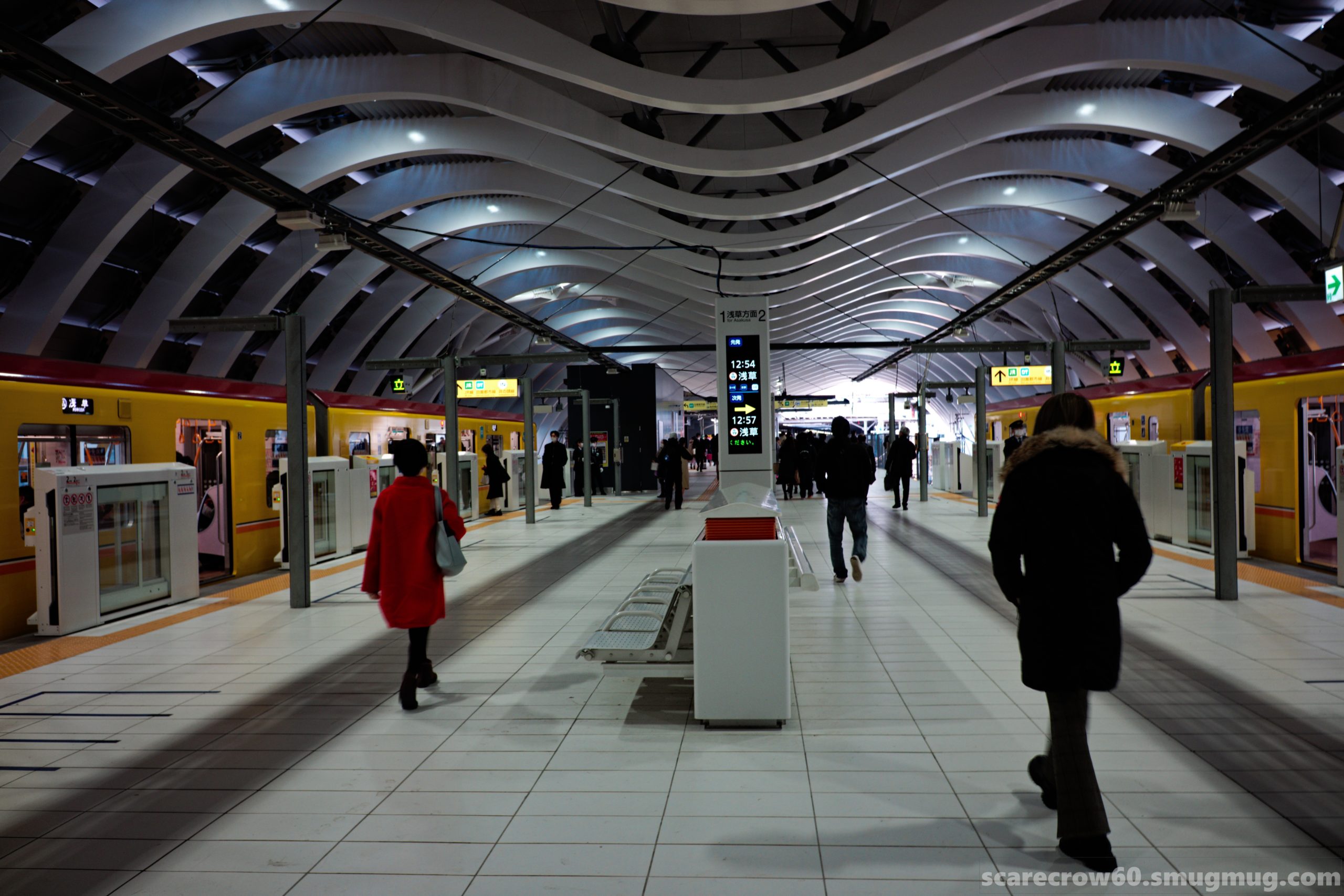Previously, we have confirmed that the real Zoshigaya is a quiet and peaceful town, totally different from that problematic one, we proceed further on our photo walk.
The Otori Shrine stands compactly along the Tram line. Here is a shot through the a-shaped guardian dog.
I think the SIGMA 17-70 has a weakness in high contrast scenes where it tends to white out if not careful with exposure, but I rather like the soft, dusty back bokeh. The transparent-ish colors, which are typical of Sigma, sometimes look a bit lacking when viewed on the camera monitor on site, but after developing and finishing the image, I am amazed that is captured in a natural and pleasing manner.
The dark blue of the shrine curtain hanging over the main shrine is so beautiful.
A gentle uphill from the side of the shrine. I recently learned that these strange curved paths in town are usually the remains of old waterways, but I wonder about this one.
So, at the end of the several S-shaped curves, you will see this Kishimojin-do shrine.
Along with Iriya in Taito Ward, it is said to be one of the two most famous Kishimojin shrine in Tokyo. Together with Nakayama’s in Ichikawa City, they are said to be the three major ones of Edo (old name of Tokyo).
This Inari shrine is also enshrined in the temple grounds. It’s in midst of the prayer.
Come to think of it, Inari are often enshrined together in the precincts of large shrines, aren’t they? As far as I remember, there is Kitano Tenmangu Shrine in Kyoto, Ikuta Shrine in Kobe, Nezu Shrine in Tokyo, and this one. Why are they?
I was a bit curious, so I asked Dr. Google, and found that a Shinto priest had answered a similar question on Yahoo!
– I am a priest. Because by the Edo period there were many small Inari shrines throughout the country, which became “Matsu-sha” of larger shrines as villages were merged after the Meiji Restoration.
I see. Incidentally, “Massha” is a term for a shrine that enshrines a guest deity that has little to do with the main deity, while a shrine that enshrines a sub-deity that is closely related to the main deity is called a “Sessha” to distinguish it. Come to think of it, there are deities of each zodiac sign at the side of the main shrine of Shimogamo Shrine in Kyoto, and I think they are called “Twelve Sessha”.
After studying this trivia, here is the main hall of the main deity, Kishimojin. I refrained from taking a close-up shot from the shrine front, so I took this shot from a distance and from diagonally behind. It has a certain style, doesn’t it?
Unusually there is a candy store on the grounds of the temple. This is an old-fashioned kind of candy.
On a whim, I bought a box of nostalgic Bontan candy. It tasted just as good as it used to.
I entered Kishimojin from a different direction, but there is a proper approach to Kishimojin from the Tram Kishimojin-mae stop. It looks like this now in the dead of winter, but if you visit in the green season, it would be quite a spectacular sight.
The approach to the shrine is lined with ordinary houses, but some of them have been updated as a modern approach with information centers, stylish cafes, and galleries.
So, that’s it for this photo walk in Zoshigaya.
Sitting on a bench I looked at smart phone to see which direction I should take the tram to go back home, and found that there was a subway station directly below me.
With the help of google map, I was able to walk around an unfamiliar town without any difficulty, so I would like to visit other “undiscovered Tokyo” more and more.
Thank you very much for reading to the end.




